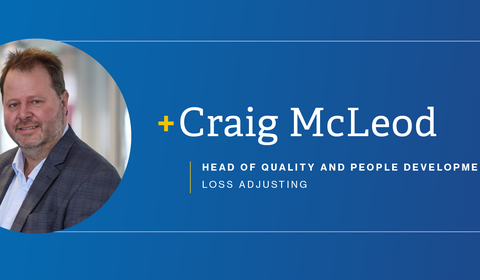Leave Specialists at Broadspire report seeing a growing number of mental health-related leaves among their claims and it’s no wonder. According to a recent survey conducted by The Conference Board, largely because of long hours and excessive workloads, 34% of US workers report an overall decline in their mental health over the last six months. Juggling the responsibilities of a modern world from multiple jobs to childcare to after-school sports to managing a tight family budget with an ever-growing list of work responsibilities can be difficult to handle and overwhelming.
Despite a trend in our culture to talk about resilience in the face of adversity or “leaning in” to our careers, the reality is that more and more seems to be expected of employees. Many times, they face constantly changing, never-quite-achievable goals that set them up for failure. In fact, some of this talk of being stronger and doing more makes things even worse as employees are essentially told that something is wrong with them if they are feeling a little human. Something needs to change, and we believe that even minor changes can have a big impact.
The mental health experts at Broadspire have gathered a few recommendations that employers can implement in an effort to improve the mental health of their employees and generally create a more stable, healthier workplace and ultimately decrease the number of mental health related leaves
Clearly communicate that it is “OK to not be OK.”
A few years ago, the “It’s OK to not be OK” movement got started. This grassroots movement represents an effort to help remove the stigma often associated with mental health struggles and has gotten our society to be more open about personal struggles with mental health. It has undoubtedly helped countless people to be more open about their struggles and helped them be more willing to reach out for the help they need.
Employers can boost this message by openly talking about mental health, emphasizing their Employee Assistance Program (EAP) benefits, and encouraging supervisors to promote those services among their workers. They can also take the concrete step of supporting their employees’ wellbeing by promoting no-questions-asked mental health days off and reaching out to offer support when they notice their employee is having difficulty.
Build flexible work schedules into your culture
With the COVID-19 pandemic, came a retreat to the home office for many white-collar workers. While this has automatically created some inherent flexibility, often those who work from home have a harder time stepping away from the ever-present workspace. For onsite workers, with worker shortage in many fields, work demands have often become more intense.
Leaders can help improve their employees’ mental wellbeing by setting an example of work/life balance themselves, allowing for time away during the day to take care of personal issues, and not intruding on employee’s time away from the job afterhours. For onsite workers, employers can work with their employees to find creative ways to help worker efficiency and eliminate unnecessary tasks. Supporting this as a cooperative interactive process can go a long way to showing that support mentioned earlier.
Create a sense of security and belonging
According to the survey by The Conference Board mentioned earlier, 37% of employees say that their sense of belonging is lower than before. With economic uncertainty and the average American living paycheck to paycheck and most unable to afford a $1,000 emergency3, a feeling that one is “just a number” or expendable certainly leads to a sense of insecurity and decreased mental wellbeing.
Organizations can create a sense of security and belonging among their employees by tying the work to a sense of mission, creating clear career paths, and demonstrating a commitment to employee retention with reasonable compensation and robust benefits. Their leaders can help by giving clear feedback and demonstrating a commitment to each employee’s professional and career growth.
Formally state that time off is strictly time off
With a laptop and cellphones almost constantly within reach, work has become increasingly portable and with that portability has come the temptation (and too often the unspoken or perceived expectation) to always be available for work. This leads to increased stress, anxiety, and burnout as employees feel that they can never truly unplug.
Employers can help on this front by clearly setting the expectation that time away from work—especially vacation time--is personal time. It is time to rest, relax, and reconnect with others. Ultimately those employers will benefit from refreshed employees who tend to be more creative and more productive--creating a more positive work environment and a true win/win situation.



